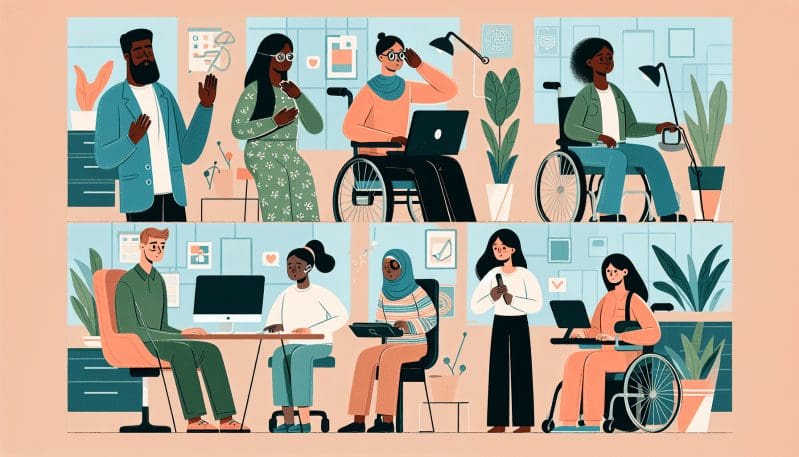The Unheard Voices: Ensuring Inclusivity for Workers with Invisible Disabilities
- Home
- The Unheard Voices: Ensuring Inclusivity for Workers with Invisible Disabilities
- Editors Desk
- April 8, 2024
- 0 Comments
In observation of Diversity Month, it is time for organizations to turn a keen eye to a segment of the workforce that is too often forgotten: employees with invisible disabilities. ‘No Worker Left Behind’ acknowledges that while the physical accommodations such as wheelchair ramps and braille signage are symbols of progress, there is a pressing need to address the nuanced and less visible needs of those with mental health disorders, chronic pain, learning disabilities, and neurological conditions.
Inclusive environments are not just about physical accessibility; they are about understanding, support, and the ability to thrive in the workplace, regardless of the nature of one’s disability. Employers must ask themselves: How can we proactively create an inclusive environment that recognizes and supports invisible disabilities? What policies can we implement to ensure that these workers feel equally valued and capable of performing at their best?
The challenge is not a small one. It calls for a collective effort to transcend basic compliance and move towards a culture that not only understands but embraces the unique challenges faced by workers with invisible disabilities. This shift is not just beneficial for the individuals concerned; it fosters a diverse and multifaceted workforce that is innovative, resilient, and representative of the world we live in.
We must firstly confront and address the stigma that is often associated with invisible disabilities. Too many employees suffer in silence, fearing that disclosure of their condition may lead to discrimination or misunderstanding. Education and open dialogues are essential in breaking down these barriers and dispelling myths surrounding these kinds of disabilities.
Businesses can lead the charge by taking actionable steps such as providing comprehensive health coverage that includes mental health services, offering flexible work arrangements, and fostering a supportive work culture that encourages employees to seek help when needed. Moreover, regular training sessions for management and staff can enhance understanding and empathy, creating a supportive network within the workplace.
But it goes beyond policy. We must explore the intersectionality of disability and diversity, considering the compound impact of invisible disabilities on individuals who may also be part of other marginalized groups. Our approach must be holistic, recognizing that each employee’s experience is unique and that accommodations must be personalized and flexible to be truly effective.
‘No Worker Left Behind’ recognizes that ensuring inclusivity for workers with invisible disabilities is a complex yet vitally important mission. As we strive for a world where every worker is valued and supported, let us all commit to listening to the unheard voices and becoming champions for the inclusivity that drives our society forward. This Diversity Month, let’s pledge to make visibility, understanding, and support for invisible disabilities a priority in our workplaces.


Leave A Comment